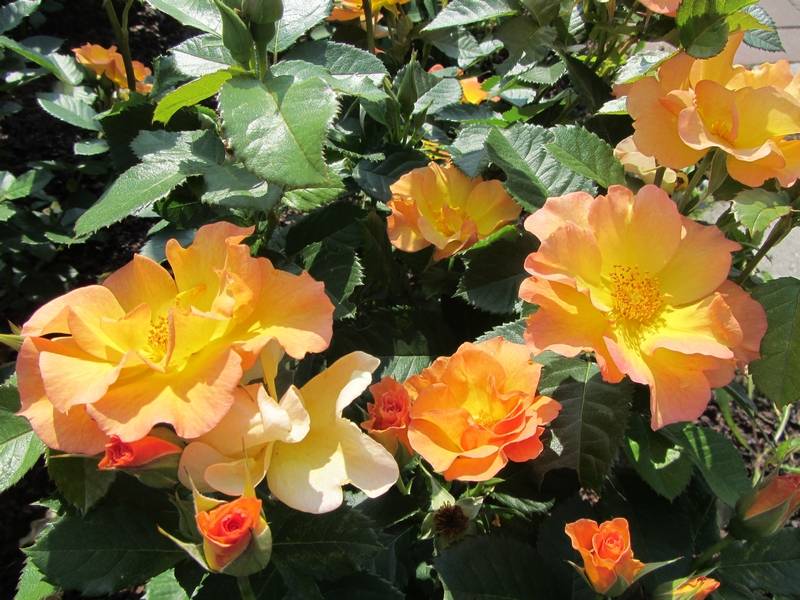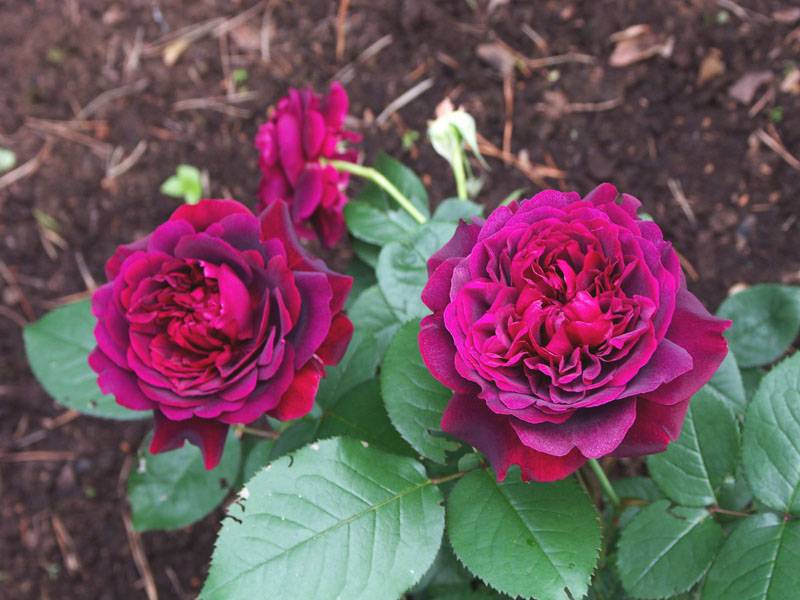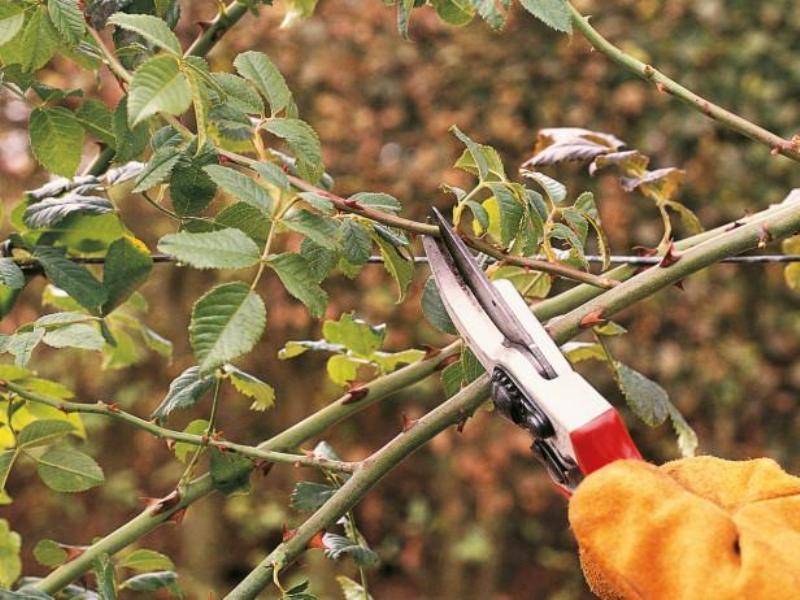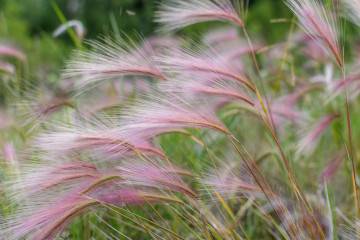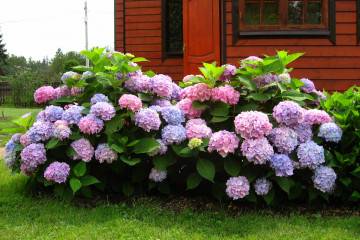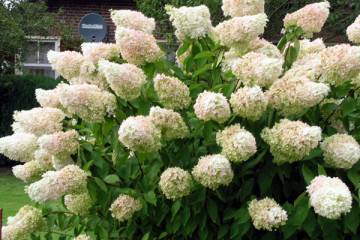Park rose: planting and care in the open field
Content:
The park rose belongs to one of the large groups of garden roses. It differs from other varieties in appearance and cultivation characteristics. The park view combines old roses as well as decorative cultivars of domesticated rose hips.
Growing park roses in the open field
Park rose is a shrub plant that grows up to 2.5-3 m in height. This group of shrubs is divided into two types: flowering once and flowering several times per season. When growing once flowering varieties, it is very important to preserve last year's shoots, otherwise they will not bloom.
Popular varieties of this variety
Varieties of park roses begin to bloom earlier than other species and at the same time are very active. The flowers are brightly colored and exude a pleasant sweet scent.
Canadian park roses
These varieties are intended for cultivation in cool climates. Plants are able to withstand temperatures down to -35 ° C. They develop remarkably well in the regions of the Middle Lane, but in the southern regions they will be too hot and they may suffer from drought.
John Davis
A tall, lush bush, reaching 2-2.5 m in height and 1.5 m in width. The pink flowers have a classic shape and an amazing sweet aroma. The flowering period starts in early summer and lasts until the very cold.
John Franklin
The bush is medium-sized compact, grows up to 1.2 m in height and 1 m in width. Terry flowers with fringed petals of red color. They resemble carnations in appearance. Flowers are located on the shoots singly or in small inflorescences. They have a pleasant light aroma.
Morden Sunrise
A short plant bush can reach 1 m in height and 0.7 m in width. The flowers are orange-pink of medium size (about 8 cm in diameter). The variety is characterized by high frost resistance.
Prairie Joy
A large rose bush with green shoots and abundant green foliage. The stems are decorated with a large number of inflorescences of 3-5 double fragrant flowers. The variety is suitable for use in hedges.
English park roses
This variety of roses is distinguished by large (up to 12 cm in diameter) flowers of a special shape. Also, gardeners note the unusually beautiful formation of the bushes. As a rule, this is a sprawling form of culture, covered with heavy double flowers with an amazing aroma.
Abraham Derby
The flowers are large with a classic cup-shaped shape, which have a light fruity aroma. The buds are located at the tips of the stems in the form of 1-3 peduncles. Apricot petals with pink edging. In cold weather, the color becomes brighter.
Benjamin Britten
The bush is strong but small in size. It grows up to 1 m in height. Abundant flowering. The large flowers are cupped and have a fruity-wine aroma. The color is bright red with an orange tint. The variety is resistant to diseases, undemanding to growing conditions.
William Shakespeare 2000
The variety is immune to many diseases and pests. Densely double roses of bright red color have a very pleasant smell. Several buds bloom on each stem at the same time. They stay on the branches for up to two weeks. When blooming, the flowers are cupped, then they acquire a flatter shape.
Chippendale
The Chippendale variety belongs to the shraba group, has a high frost resistance (up to -27 ° C). The bush is powerful, vigorous, compact. The height of an adult plant is about 0.8-1.2 m, width is 0.7-1 m. Dark green, dense, shiny leaves bloom on erect flexible stems. Roses are large (up to 12 cm in diameter) cupped with a pleasant sweet aroma. Terry petals of bright orange, apricot and pale pink colors. All flowers are collected in small inflorescences of 2-3 roses. They are located at the very top of the stems.
Other varieties
Other varieties of park roses are no less popular.
Variety Westerland
The hybrid shrub grows about 1.5-2 m in height. Possesses thick and powerful stems. Grows well in light shade. The foliage is green and olive and glossy. The buds are orange in color, after opening their color changes, becoming pink. 5-10 roses can bloom on one shoot at the same time. Their size is 10 cm in diameter, the shape is cup-shaped.
Louis Audier
The bush is tall, it can grow from 1.5 m to 2-3 m in height. Its width is 2 m. At the stage of opening, the flower looks like a peony; at the stage of full opening, it takes the shape of a saucer. The flowering is wavy, roses appear in brushes of up to five pieces. From so many flowers, the stems begin to bend in different directions, and the bush becomes like a fountain of flowers.
Rose Chinatown
The bush is low, grows to 0.9-1 m in height, densely leafy. The foliage is dark green, glossy and dense. Creamy yellow buds with deep pink goblet-shaped strokes, they are pointed at the tips. The flowers are large (up to 8-10 cm in diameter), yellow-pink, double-cup-shaped and exude a pleasant aroma. Abundant flowering, continuous.
Park rose: planting and care in the open field
After choosing a suitable site and soil, you should proceed to planting a rose. First you need to prepare the holes.
What time is the boarding
Park roses grow on the street, so you need to plant them in the warm season. You can start planting bushes in May and carry it out until mid-autumn.
Seat selection
In order for roses to bloom for a long time and abundantly, they need to pick up a sunny area protected from the wind with fertile, breathable soil. Do not plant them in the shade under tall trees, as they will not bloom abundantly.
How to prepare the soil and flower for planting
As for the soil, here the park rose is not too pretentious. But in order for the plant to quickly take root and gain strength, loose earth is needed.
Cultivation of park roses is possible with the help of seedlings. Sapling preparation is required if it has an open root system. First, it must be left in water for 24 hours, then the leaves and bad root shoots must be cut out. The above-ground part of the plant must be cut off to 30 cm. The buds under the graft must also be removed.At the end, the seedling should be treated with a 3% solution of ferrous sulfate, the roots should be dipped in a mixture of clay and mullein (proportion 2: 1).
Planting procedure step by step
Step-by-step instructions for the correct planting of park roses:
- First you need to dig a hole 40 cm in diameter and 70 cm deep.
- Pour drainage (broken brick, pebbles, expanded clay or clay) on the bottom with a layer of up to 7 cm. Fill with prepared soil.
- Place a seedling in the center of the hole.
- Pour ordinary earth or special soil mixture on top.
- Trample and water the earth (about 15 liters of water per 1 bush).
- Sprinkle seedlings with dry peat with a layer of up to 20 cm.
Plant care
Care and cultivation of park roses at home require attention from the grower. Only in this case they will grow beautiful and resistant to various diseases.
Watering rules and humidity
The plant tolerates drought better than too moist soil. But for normal development, it is necessary to water the bushes abundantly in spring and summer. During this period, roses spend a lot of energy on growth and flowering. If the weather is dry in summer, you need to water the bushes 2-3 times a week.
Top dressing and soil quality
In the spring, before the start of active growing season, nitrogen fertilizers must be applied under the bush, in the middle and at the end of summer - potassium-phosphorus fertilizers. In the fall, before the arrival of frost, it is necessary to fertilize again with rotted manure. Roses prefer light clay soil with a lot of humus. If the clay soil is too heavy, it can be improved by adding peat or rotted manure.
Pruning and replanting
In the spring, before bud break, it is necessary to carry out sanitary pruning - to remove dead, frostbitten, dry branches, as well as weak internal ones. In the fall, you can carry out anti-aging pruning - cut off old stems at the base of the earth, and also remove non-flowering shoots and small shoots.
How park roses bloom, how many times per season
Park rose blooms early, and this process lasts up to a month, and in some varieties even longer. The color of the buds is very versatile: you can see both pale white flowers and specimens of deep purple color. The bud is slightly rough to the touch, terry, and the number of petals exceeds 100 pcs. No other rose variety can boast of this.
Park roses are conventionally divided into two large groups:
- blooming once;
- blooming repeatedly.
How to care during and after flowering
During the flowering period, faded buds should be removed. At the end of the process, you need to prune the stems. In September, it is recommended to remove all the foliage from the shoots for the winter, bend them to the ground and fix them, then cover the bushes with spunbond, spruce branches. You need to open the shelter only when the first days of spring come.
Diseases, pests and ways to control them
The park rose often suffers from powdery mildew and spheroteca. As a preventive measure, at the beginning of spring, the bush should be sprayed with a solution of ferrous sulfate, and during the flowering period - with appropriate preparations. Of the pests, bushes are disturbed by weevils, aphids, spider mites and leafworms. In the event of their invasion, the plants will need to be sprayed with insecticides.
A park rose can be grown in any region, it can decorate any garden everywhere, and the reproduction of such species is not difficult. Even a beginner can grow them. The main thing is to responsibly approach the choice of a suitable variety and follow all the rules of planting and care.


